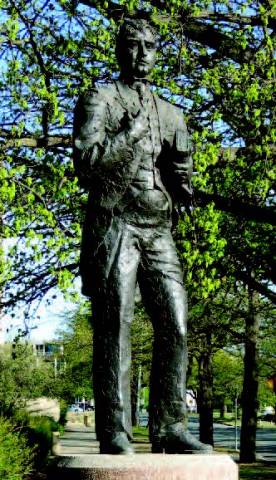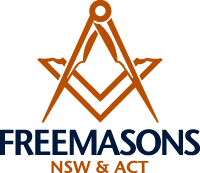
Sir Edmund Barton

Edmund Barton, Prime Minister of Australia from 1901 to 1903, was born in the Sydney suburb of Glebe on 18 January 1849 and was nicknamed Toby. He was educated at Fort Street Model School and Sydney Grammar.
Barton entered the University of Sydney where he graduated BA in 1868 and MA in 1870, studied law and was admitted to the Bar in December 1871. He developed a close friendship with Bro Lawrence Hargrave, the aviation pioneer, became his family lawyer and witnessed some of his experiments.
Toby Barton enjoyed fishing and cricket and married Jane Mason Ross on 28 December 1877.
An England cricket team led by Lord Harris played at the Sydney Cricket Ground in February 1879. They had brought umpire Bro George Coulthard from Victoria, who judged Bro Will Murdoch run out for 19 when he was heavily backed to score a century for NSW. The crowd rioted, police had to provide an escort for the umpire and the England team but Bro Barton remained at the wicket until play was abandoned.
Barton decided to enter politics, was un - successful in 1876 and 1877 but won the University of Sydney seat in the NSW Legislative Assembly in 1879. When the seat was abolished, he was elected unopposed for the seat of Wellington and in 1882 won the seat of East Sydney as a Free Trader.
In January 1883, Barton became Speaker of the Legislative Assembly, show - ing a knowledge of the procedures of the British House of Commons and constitutional law. He resigned as Speaker in January 1887 to take a seat in the Legislative Council.
Barton strongly believed in Federation and supported Sir Henry Parkes speech for ‘one great national government for all Australia’ given at Tenterfield in October 1889. The following month, Barton gave his support for Federation at a crowded meeting at the Sydney Town Hall and attended the National Australasian Convention in Sydney in March 1891. Parkes’ government fell in October 1891 and Parkes, then 76 years old, persuaded Barton to lead the Federal movement in NSW.
In March 1897, Barton was one of the elected delegates for the National Australasian Convention at Adelaide where he was Chairman and the acknowledged leader of the Federation movement in Australia. On 7 February 1900, Barton with his wife travelled to London as leader of the Australian delegation to explain the Constitution Bill to the British Government. The Bill was subsequently passed to facilitate the Federation of the Australian colonies.
Back in Australia, Barton was commissioned to form the first Ministry and named its members on Christmas Day 1900. After a campaign for the first elections, he was declared elected unopposed for the seat of Hunter. In 1902, he accepted a knighthood which he had previously declined in 1887, 1891 and 1899.
Barton was also Minister for External Affairs, was largely responsible for the Immigration Restriction Act, the Aboriginal Protection Boards, abolished interstate tariffs, established a range of import tariffs to provide income and protect local jobs and became directly involved in establishing the Commonwealth Public Service.
Sir Edmund Barton resigned as Prime Minister on 23 September 1903 and a few days later became the Senior Puisne Judge of the new High Court of Australia. He died suddenly of a heart attack at Medlow Bath in the Blue Mountains on 7 January 1920 and was survived by his wife, four sons and two daughters.
Barton Street at Sydney’s Circular Quay commemorated the name of Australia’s first Prime Minister until it disappeared under the construction of the Cahill Expressway. There are 13 Barton streets in the Sydney metropolitan area, Barton is an inner-city suburb on the eastern side of Capital Hill in Canberra and the Barton Highway is an important road in NSW.
Bro Edmund Barton was made a mason in Sydney in the Australian Lodge of Harmony No 556, English Constitution on 13 March 1878, passed on 10 July 1878 and made a Master Mason on 8 January 1879. He was appointed as a Senior Deacon on 9 June 1880. His petition stated he was a barrister-at-law residing at Elizabeth Street, Sydney.
Article extracted from Freemason magazine, September 2014, page 10.


